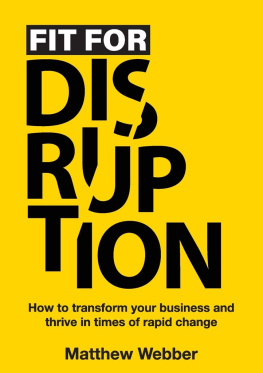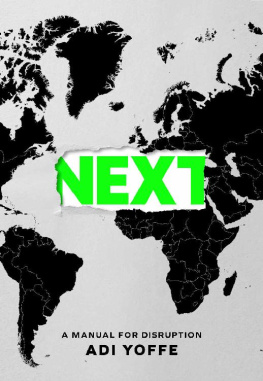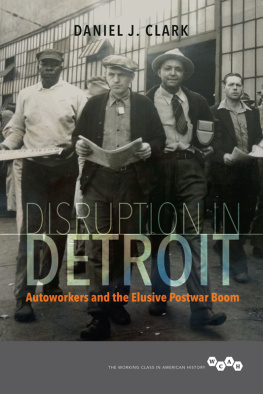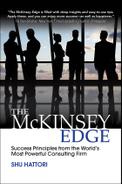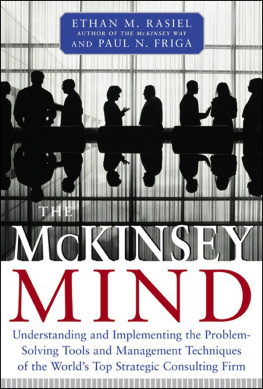No Ordinary Disruption

Copyright 2015 by McKinsey and Company.
Published in the United States by PublicAffairs,
a Member of the Perseus Books Group
All rights reserved.
Printed in the United States of America.
No part of this book may be reproduced in any manner whatsoever without written permission except in the case of brief quotations embodied in critical articles and reviews. For information, address PublicAffairs, 250 West 57th Street, 15th Floor, New York, NY 10107.
PublicAffairs books are available at special discounts for bulk purchases in the U.S. by corporations, institutions, and other organizations. For more information, please contact the Special Markets Department at the Perseus Books Group, 2300 Chestnut Street, Suite 200, Philadelphia, PA 19103, call (800) 810-4145, ext. 5000, or e-mail .
Book Design by Timm Bryson
A catalog record for this book is available from the Library of Congress.
Library of Congress Control Number: 2015934424
ISBN 978-1-61039-580-9 (EB)
First Edition
10 9 8 7 6 5 4 3 2 1
CONTENTS

MANAGING A COMPLEX ORGANIZATION ISNT EASY IN THE BEST OF times. Its especially difficult when the news continually reminds you that everything you thought you knew about how the world works seems to be... wrong. Or at least a little off. Dramatic changes come from nowhere, and then from everywhere. Major shifts can blindside even the most circumspect among usfirst slowly, and then all at once. The fortunes of industries, companies, products, technologies, and even countries and cities rise and fall overnight and in completely unpredictable ways. Just consider some of the ways in which events on the ground have upended long-held assumptions, long-term projections, and basic beliefs about how things are supposed to work in the global economy:
For years, the global retailing industry looked to American consumers, the most powerful and prolific in the world, as a proxy for the health of global shoppers. On Cyber Mondaythe day after the Thanksgiving weekendthe media provided saturation coverage of the annual e-commerce binge. On December 1, 2014, Americans spent a record $2.65 billion online.
In October 2013, the US Energy Information Administration made a stunning announcement. The United States, until recently an energy hog struggling with declining fossil fuel production, would surpass Russia as the worlds largest producer of hydrocarbons in 2013. Yes, production of natural gas and oil had been rising sharply, thanks to the advent of fracking. But the pace of growth took the agency by surprise. Just a year before, it had projected that the United States wouldnt surpass Russia until 2020. In North Dakota alone, oil production increased twelvefold between 2004 and 2014, helping to reverse a decades-long decline in population.
On February 19, 2014, Facebook acquired WhatsApp, a five-year-old startup, for a stunning $19 billion. The instant-messaging app, started in mid-2009 by two former Yahoo employees, had enlisted 450 million usersmore than Twitter and more than the entire population of the United States.
On September 24, 2014, the world took in a familiar scene of jubilant scientists at a mission control center celebrating a technical achievement. But this was different. The control center was in southern India, not southern Texas. And many of the scientists wore brightly colored saris. The team at the Indian Space Research Organization was celebrating its successful placement of a spacecraft into orbit around Mars. We have gone beyond the boundaries of human enterprise and innovation, Prime Minister Narendra Modi proclaimed, taking his rhetorical cues from Star Trek. We have dared to reach into the unknown. The most astonishing feature of the venture may have been its cost: a mere $74 million. Modi noted that the whole effort cost less than Hollywood spent making the science-fiction film Gravity. Aloft for nearly a year,
These big, important stories incorporate common threads that are by turns bewildering and delightful. Speed, surprise, and sudden shifts in direction in huge global markets routinely impact the destinies of established companies and provide opportunities for new entrants.
In fact, ours is a world of near-constant discontinuity. Competitors can rise in almost complete stealth and burst upon the scene. Businesses that were protected by large and deep moats find that their defenses are easily breached. Vast new markets are conjured seemingly from nothing. Technology and globalization have accelerated and intensified the natural forces of market competition. Long-term trend lines, once reliably smooth, now more closely resemble sawtooth mountain ridges, hockey sticks (a plateau followed by a steep ascent), or the silhouette of Mount Fuji (rising steadily, then falling off). Five years is an eternity.
This new normala world in which China leads the globe in holiday consumption, the United States is the largest oil producer, a mobile messaging app is worth $19 billion, and India is a leader in space explorationpresents difficult, often existential challenges to leaders of companies, organizations, cities, and countries. The formative experiences of many senior leaders came during a period that was uniquely benign and placid for the global economy. With good reason, the twenty-five years leading up to the 2008 financial crisis came to be known, in the words of economists James Stock and Mark Watson, as the Great Moderation.with cash, they could pay for with borrowed funds. There were blips and bumps along the road, to be sure, but by and large, the tale of the Great Moderation was one of continuity and persistent trends.
That familiar world is no more. The financial crisis of 2008, the deepest economic contraction since the Great Depression, and a host of disruptive technologies, trends, and developments have conspired to ruffle the calm. Many of the long-standing trends that made life so pleasant for investors and managers during the Great Moderation have broken decisively. After nearly three decades of declining interest rates, the cost of capital cannot get cheaper, and it could rise over the next twenty years. After a prolonged period of falling and steady prices for natural resources, the cost of everything from grain to steel is becoming more volatile. The demographic surplus the world enjoyed as working-age populations grew and China joined the global trading system is likely to turn into a demographic deficit as population growth grinds to a halt and the worlds labor force ages. Although inequality between countries continues to shrink, in many parts of the world, individualsparticularly those with low job skillsare at risk of growing up poorer than their parents.
Thats just the beginning.
A radically different world is forming. The operating system of the worlds economy is being rewritten as we speak. It doesnt come out in a splashy new release. It evolves, unfolds, and often explodes.
FOUR GREAT DISRUPTIVE FORCES
We believe that the world is now roughly in the middle of a dramatic transition as a result of four fundamental disruptive trends. Any one of these disruptions, by itself, would probably rank among the largest economic forces the global economy has ever seenincluding industrial revolutions in advanced economies. Although we all know that these disruptions are happening, most of us fail to comprehend their full magnitude and the second- and third-order effects that will result. Much as waves can amplify one another, these trends are gaining strength, magnitude, and influence as they interact with, coincide with, and feed upon one another. Together, they are producing monumental change.
Next page

